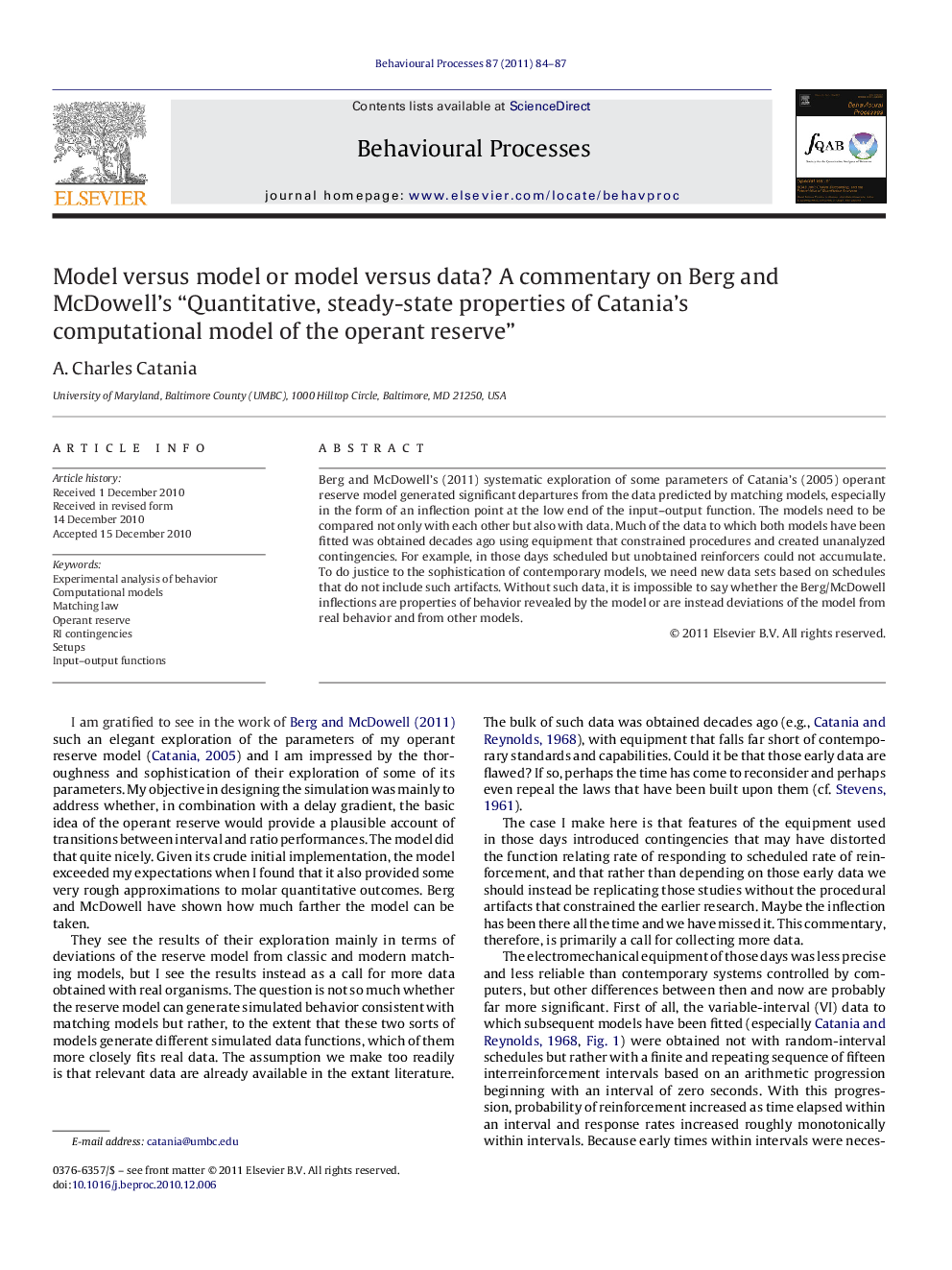| Article ID | Journal | Published Year | Pages | File Type |
|---|---|---|---|---|
| 2427052 | Behavioural Processes | 2011 | 4 Pages |
Berg and McDowell's (2011) systematic exploration of some parameters of Catania's (2005) operant reserve model generated significant departures from the data predicted by matching models, especially in the form of an inflection point at the low end of the input–output function. The models need to be compared not only with each other but also with data. Much of the data to which both models have been fitted was obtained decades ago using equipment that constrained procedures and created unanalyzed contingencies. For example, in those days scheduled but unobtained reinforcers could not accumulate. To do justice to the sophistication of contemporary models, we need new data sets based on schedules that do not include such artifacts. Without such data, it is impossible to say whether the Berg/McDowell inflections are properties of behavior revealed by the model or are instead deviations of the model from real behavior and from other models.
Research highlights► We should compare how each model predicts data, not how one model predicts the other. ► The matching law is based on decades-old data obtained with outmoded procedures. ► If the predicted inflection is a property of real data the matching law is called into question. ► We therefore need to re-assess the random-interval input-output function experimentally. ► Resolving such issues calls for experimental analyses, not molar quantitative analyses.
